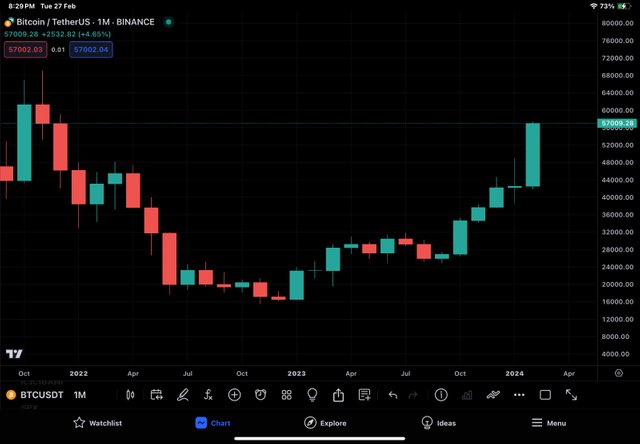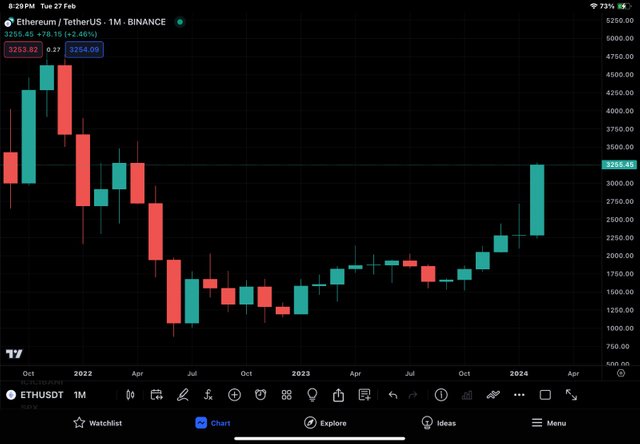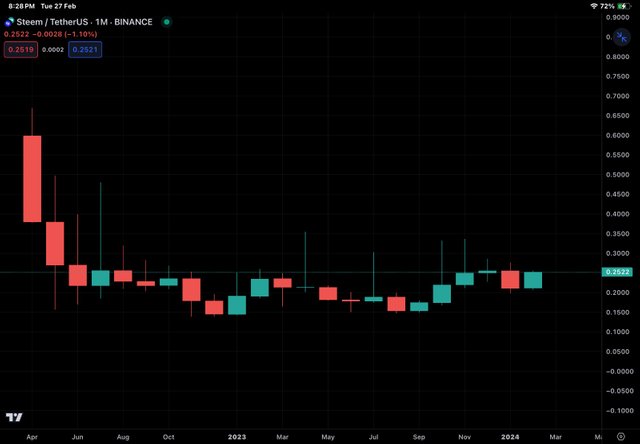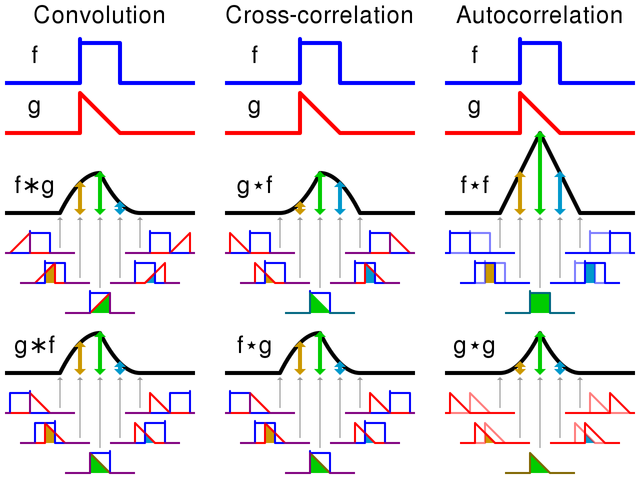Hello wonderful community around the globe. I hope you are all doing well and enjoying this season of engagement challenge. A whole lot of new themes have been floated this week and today I choose to write a task set by steemit crypto academy which is about cross-asset correlation.
Explain the concept of cross-asset correlation and its significance in portfolio management. How does understanding correlations between different cryptocurrency assets contribute to effective diversification strategies?

Cross-asset correlation, as the name implies, refers to the relationship between different asset classes in terms of their price movements. If we focus on the term "cross-asset correlation," we can see that it's composed of three words that are self-explanatory. "Cross" refers to different classes, "asset" refers to stocks, bonds, cryptos, gold, etc., and "correlation" means the relationship of prices between two assets under consideration.
It's a matter of common understanding that in the case of assets falling under the ambit of cross-asset correlation, the relationship between the prices can either manifest in the form that prices of the assets under consideration follow the same direction or can follow the opposite direction. To put it simply, if we compare two assets and the prices of both increase or decrease to a similar degree, then such assets are known to have a positive or high correlation. On the contrary, if the prices of the assets go in the opposite direction or move in the same direction but not to the same extent, then such assets are considered to have negative or low correlation.
The concept of cross-asset correlation holds true for stocks, as well as cryptocurrencies. This concept plays a significant role in portfolio diversification. It is a matter of common understanding that as an investor, if we add assets to our portfolio that have high correlation and if the price of an asset does not move in the anticipated direction, then we will have to suffer a loss in all the assets in the portfolio because their prices will move in the same direction. On the contrary, if assets with low or negative correlation are added to the portfolio, then there is a high chance that our portfolio will remain stable.

Explore how cross-asset correlations change during bullish and bearish market conditions. How can traders leverage this knowledge to adapt their portfolio strategies based on overall market sentiment?

Changing price of an asset can impact cross-asset correlations during both bullish and bearish market conditions. In a market driven by major players such as big hands, corporate houses, or financial institutions with the potential to manipulate it, retail investors often find themselves at a disadvantage without the ability to influence market direction.
Financial institutions and corporate houses often place block orders, altering market dynamics. In terms of cross-asset correlation, it tends to be positive during bullish markets and negative during bearish markets. In simpler terms, bullish markets exhibit high or positive correlation, while bearish markets show a negative correlation.
Understanding this correlation shift during bullish and bearish markets empowers investors to navigate market dynamics. In bullish markets, investors add assets with positive correlations to capitalize on favorable market moves. Conversely, during bearish markets, they invest in assets with low or negative correlations to stabilize their portfolios.
Investing in assets with positive correlation during bullish markets is profitable, as added assets move in the favorable direction, yielding maximum profit. On the contrary, during bearish markets, investing in assets with low or negative correlation stabilizes the portfolio, as all assets do not follow the same trend. This diversification helps neutralize the impact of assets moving unfavorably, as some may move in the opposite direction or to a lesser extent.

Explain how understanding cross-asset correlations can be utilized for effective risk management and portfolio diversification. Provide examples of how allocating assets with low or negative correlations can help mitigate overall portfolio risk.

To understand this concept, let's take the example of two hypothetical assets named X and Y.
Case 1: Assume that assets X and Y have a high or positive correlation, meaning if the price of X goes up, the price of Y also goes up, and vice versa. In a bullish market, both X and Y yield profit due to their positive correlation, leading to a significant increase in the portfolio value. Conversely, in a bearish market, the prices of both X and Y decrease, resulting in substantial losses.
Case 2: Suppose assets X and Y have low or negative correlation. In this scenario, if the price of X goes down, the price of Y either goes up or does not follow X. The loss from the declining price of X can be compensated by the increasing price of Y. This illustrates how assets with low or negative correlation can help mitigate risk in the portfolio.
It's crucial to note that, in a bullish market, assets with low correlation may not yield as much profit as those with high correlation. The key point is that knowledge of cross-asset correlation can maximize profits in a bullish market and minimize losses in a bearish market for investors.

Explore the historical correlation patterns between STEEM and other major cryptocurrencies, such as Bitcoin and Ethereum. How have these correlations evolved over time, and what insights can traders draw from STEEM's behavior in relation to the broader market?

Before delving into this question, it's essential to understand that Bitcoin is the dominant force in the cryptocurrency market. Significant price changes in Bitcoin often influence the entire market. However, establishing correlation requires a deeper understanding of cross-asset correlation.

BTC/USDT chart on monthly time frame

ETH/USDT chart on monthly time frame
Examining the monthly charts of Bitcoin and Ethereum reveals a striking similarity in price movement, indicating a positive or high correlation between these two cryptocurrencies.
Now, let's analyze the chart of Bitcoin and STEEM.

STEEM chart on monthly time frame
Observing the chart, it becomes evident that, initially, STEEM followed the falling trend of Bitcoin. However, as time progressed, STEEM did not exhibit a significant appreciation in price, diverging from Bitcoin's pattern. This suggests a negative or low correlation between Bitcoin and STEEM.
Traders can draw insights from this knowledge by recognizing the need for separate technical and fundamental analyses for investing in STEEM. The divergence in correlation indicates that STEEM's price movements are not strongly influenced by Bitcoin. Investors should be aware that appreciation or depreciation in STEEM's price is not solely due to correlation with Bitcoin but may be influenced by other factors.

Conclusion:

Cross-asset correlation is a crucial concept for investors seeking benefits in various market circumstances. The key takeaway is for investors to invest in assets with positive correlation in bullish markets and assets with negative or low correlation in bearish markets. Additionally, performing individual analyses on each asset is essential before making investment decisions based on general market sentiment.

Upvoted. Thank You for sending some of your rewards to @null. It will make Steem stronger.
Downvoting a post can decrease pending rewards and make it less visible. Common reasons:
Submit
Thanks
Downvoting a post can decrease pending rewards and make it less visible. Common reasons:
Submit
You have described cross-asset co-assets in great detail. The explanation provided along with your examples and images is suitable for investors to gain profits in different market conditions. Thanks and congratulations.
Downvoting a post can decrease pending rewards and make it less visible. Common reasons:
Submit
Thank you for your remarks.
Downvoting a post can decrease pending rewards and make it less visible. Common reasons:
Submit
Well done mate! The end result lies in paragraph agra[h which reads
The knowledge or I should say analytical capacity or anticipation with the help of tools whether the stocks you hold reached a point that has earned you enough and it's time to get rid of. My best wishes.
Downvoting a post can decrease pending rewards and make it less visible. Common reasons:
Submit
Thanks
Downvoting a post can decrease pending rewards and make it less visible. Common reasons:
Submit
@drqamu This post provides an excellent breakdown of cross-asset correlation making a complex concept easy to understand. The detailed exploration of bullish and bearish market conditions along with real-world examples adds great value. The analysis of historical correlation patterns especially involving STEEM is insightful for traders. Overall a comprehensive guide for anyone looking to enhance their understanding of portfolio management and risk mitigation in the crypto space. Best of luck in the Steemit Crypto Academy contest!
Downvoting a post can decrease pending rewards and make it less visible. Common reasons:
Submit
Thank you for your thoughtful and positive feedback! I'm glad you found the breakdown of cross-asset correlation helpful. Good luck in the Steemit Crypto Academy contest!
Downvoting a post can decrease pending rewards and make it less visible. Common reasons:
Submit
Your post provides a clear and insightful explanation of cross-asset correlation its significance in portfolio management, and its role in effective diversification strategies. The use of simple language and relatable examples such as the scenarios involving assets X and Y enhances the understanding for readers making complex concepts accessible.wish you best of luck dear
Downvoting a post can decrease pending rewards and make it less visible. Common reasons:
Submit
I am pleased to read your remarks on various sections of my post. Thanks for your valuable time and efforts .
Downvoting a post can decrease pending rewards and make it less visible. Common reasons:
Submit
How are you well you have written so well that I was shocked into see your post in the post was not very lengthy and it was containing the main he points and the most importantly written in such a way that it's concept is clear and the main purpose of the engagement challenge is that we understand what is the purpose of the port so you have answered very well you have give clear explanation
Best of luck for the participation
Downvoting a post can decrease pending rewards and make it less visible. Common reasons:
Submit
Thank you so much for your kind words! I appreciate your positive feedback on my post. I strive to convey concepts clearly and concisely.
Downvoting a post can decrease pending rewards and make it less visible. Common reasons:
Submit
Your doctor of???? Easy to ask medicine
Downvoting a post can decrease pending rewards and make it less visible. Common reasons:
Submit
Medicine .
Downvoting a post can decrease pending rewards and make it less visible. Common reasons:
Submit
Mashallah you will help me alot where do you work which hospital
Downvoting a post can decrease pending rewards and make it less visible. Common reasons:
Submit
What do u do ? Studies etc . I am from India and work in capital Delhi .
Downvoting a post can decrease pending rewards and make it less visible. Common reasons:
Submit
I am just staying at home from Pakistan
Downvoting a post can decrease pending rewards and make it less visible. Common reasons:
Submit
You have explained in detail about cross asset correlation in your best way and not only this you have also explain real world examples and especially the charts that you have explained by telling and giving us understanding of the historical patterns and relationships of STEEM with BTC and ETH arey looking very interesting I wish you success in this engagement challenge in which you put your reasonable efforts to participate...
Downvoting a post can decrease pending rewards and make it less visible. Common reasons:
Submit
I am pleased by your acknowledgment of some points of my post . I appreciate your efforts and time .
Downvoting a post can decrease pending rewards and make it less visible. Common reasons:
Submit
My pleasure to visit your post..
Keep support in platform with creating quality content
Downvoting a post can decrease pending rewards and make it less visible. Common reasons:
Submit
Hello dear friend, I am glad coming across your post, it's really powerful and efficient with it way it shares it ideas.
Indeed the goal is to invest in a bullish market that would generate us massive profit and cause more positive correlation between different assets, I really appreciate your good work thanks for sharing wishing you success please engage on my entry too
https://steemit.com/hive-108451/@starrchris/eng-esp-steemit-crypto-academy-contest-s16w1-cross-asset-correlation-analysis
Downvoting a post can decrease pending rewards and make it less visible. Common reasons:
Submit
Thank you for your valuable feedback .
Downvoting a post can decrease pending rewards and make it less visible. Common reasons:
Submit